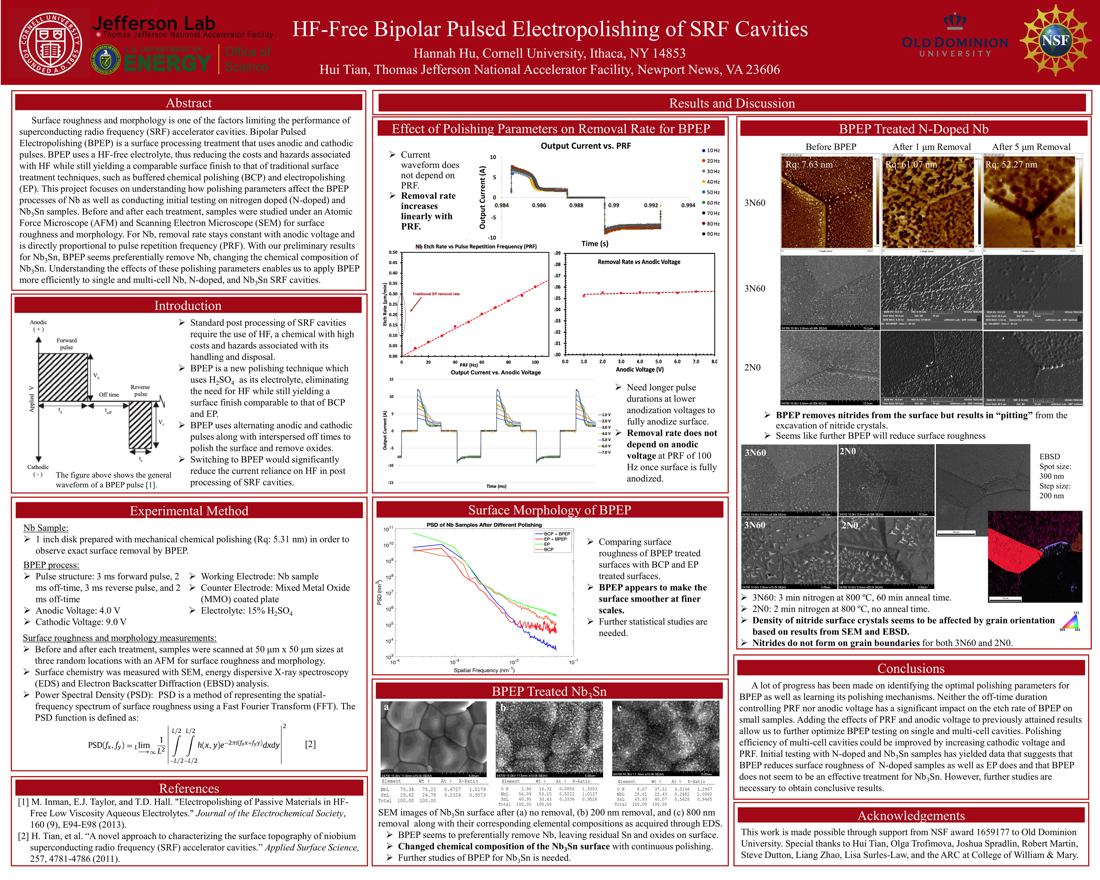Undergraduate Research at Jefferson Lab
HF-Free Bipolar Pulsed Electropolishing of SRF Cavities
Student: Hannah Hu
School: Cornell University
Mentored By: Hui Tian
Surface roughness and morphology is one of the factors limiting the performance of superconducting radio frequency (SRF) accelerator cavities. Bipolar Pulsed Electropolishing (BPEP) is a surface processing treatment that uses anodic and cathodic pulses. BPEP uses a HF-free electrolyte, thus reducing the costs and hazards associated with HF while still yielding a comparable surface finish to that of traditional surface treatment techniques, such as buffered chemical polishing (BCP) and electropolishing (EP). This project focuses on understanding how polishing parameters affect the BPEP processes of Nb as well as conducting initial testing on nitrogen doped (N-doped) and Nb3Sn samples. Before and after each treatment, samples were studied under an Atomic Force Microscope (AFM) and Scanning Electron Microscope (SEM) for surface roughness and morphology. For Nb, removal rate stays constant with anodic voltage and is directly proportional to pulse repetition frequency (PRF). With our preliminary results for Nb3Sn, BPEP seems preferentially remove Nb, changing the chemical composition of Nb3Sn. Understanding the effects of these polishing parameters enables us to apply BPEP more efficiently to single and multi-cell Nb, N-doped, and Nb3Sn SRF cavities.

Citation and linking information
For questions about this page, please contact Education Web Administrator.
